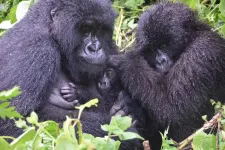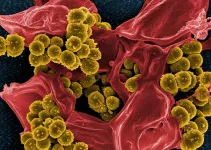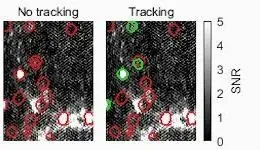Immune function of small chloroplasts in the epidermal cells of plants
2021-05-25
(Press-News.org) It is said that 10 to 15% of the world's agricultural production loss is caused by diseases, which is equivalent of the food for about 500 million people. And since 70-80% of this plant disease is caused by filamentous fungi, protecting crops from filamentous fungi is an important issue in effectively feeding the world population. In order for pathogenic fungi to infect plants, they must break through the epidermal cells of the plant and invade the interior. In other words, plant epidermal cells act as the first barrier to stop the attack of pathogenic fungi in the environment. So what kind of defense functions do epidermal cells have?
Interestingly, it was known that the epidermis of plants contain small chloroplasts that are not so involved in photosynthesis. However, it was unclear what function it had. Why are there small chloroplasts in the epidermis of plants that do not contribute much to photosynthesis?
Assistant Professor Hiroki Irieda of the Faculty of Agriculture, Shinshu University and Professor Yoshitaka Takano, Graduate School of Agriculture, Kyoto University, found that small chloroplasts in the epidermis of plants control the entry of fungal pathogens. The duo discovered that the small chloroplasts move inside the cell dramatically to the surface layer in response to the fungal attack and is involved in such defense response. Furthermore, the duo found that multiple immune factors involved in the defense response of plants are specifically found in the epidermal chloroplast, which contributes to the enhancement of resistance to the invasion of pathogen filamentous fungi. Based on this research, they hope to develop crop protection technology to enhance and control the chloroplast function of the plant epidermis, which functions as a barrier against foreign invaders, and to increase the immunity of plants, which will hopefully lead to reduction of disease damage and improvement of food production.
In this study, the duo first investigated what kind of pathogenic fungi the epidermal chloroplasts respond to. As a result, they found that multiple pathogenic filamentous fungi cause surface migration of epidermal chloroplasts. Interestingly, it was also found that these pathogenic filamentous fungi were the so-called "nonadapted" and were blocked from invading epidermal cells. On the other hand, adapted pathogenic fungus is more likely to invade the epidermis in plants in which the epidermal chloroplasts have stopped migrating to the surface layer.
Next, they succeeded in finding plant proteins involved in the surface migration of epidermal chloroplasts. When a plant that overproduces this protein was created by gene transferintroduction, epidermal chloroplasts did not move to the surface layer against pathogenic filamentous fungi. In this transgenic plant, the immunity to the epidermal invasion of pathogenic filamentous fungi is reduced. It was also found that pathogenic fungi are more likely to invade the epidermis in plants in which the epidermal chloroplasts have stopped migrating to the surface layer. These results indicate that the migration of epidermal chloroplasts to the surface layer is involved in the defense response that blocks the invasion of pathogenic fungi.
Furthermore, it was revealed that multiple factors involved in plant immunity are specifically found in the epidermal chloroplast. In addition, in mutant plants in which these types of immune factors that are found in epidermal chloroplasts did not function, migration of epidermal chloroplasts to the surface layer was confirmed, but the invasion rate of pathogenic fungi increased.
In plants that suppress the intracellular migration of epidermal chloroplast, the immunity to the epidermal invasion of pathogenic filamentous fungi is reduced. Based on the results of this study, the duo hopes to develop technology to enhance and control the function of epidermal chloroplasts, such as increasing the intracellular migration efficiency of epidermal chloroplasts when attacked by pathogenic fungi filamentous fungi.
INFORMATION:
Acknowledgements
We thank Paul Schulze-Lefert for pen2-1 and pen2-1 with PEN2-GFP, Roger W. Innes for edr1-1, Yasuhiro Kadota for bik1 pbl1, Yube Yamaguchi for pepr1-1 pepr2-1, Volker Lipka for sid2-2, and Masamitsu Wada and Sam-Geun Kong for the anti-CHUP1 antibody. We thank Daisuke Shiomi for his technical assistance and helpful discussions. We thank Kei Hiruma, Asuka Hagiwara, Kazuho Takesue, Kosei Shiratori, and Hideki Baba for their technical assistance. We thank Katsuharu Saito for his help with statistical analyses. We also thank the Research Center for Supports to Advanced Science, Shinshu University for use of facilities. This work was supported by JSPS KAKENHI Grant Numbers 15K18648 (to H.I.), 18K05643 (to H.I.), and 18H02204 (to Y.T.), by the Asahi Glass Foundation (to Y.T.), and by the Leading Initiative for Excellent Young Researchers (LEADER) program of MEXT (to H.I.).
[Attachments] See images for this press release:

ELSE PRESS RELEASES FROM THIS DATE:
2021-05-25
In the last year, one thing has become clear: we cannot live life without risk. In fact, every part of our daily routines became subject to analysis: How risky is the action and is its value worth the potential cost?
Risk analysis, though seemingly more ever-present in our thoughts today, has always been a part of how we operate and how the systems around us work. As new pressures, such as climate change, deepen, the accuracy and reliability of risk analysis models regarding issues as basic as the cleanliness of our drinking water have become more important than ever.
USC ...
2021-05-25
A study published today in Scientific Reports suggests that new health challenges may be emerging as a result of conservationists' success in pulling mountain gorillas back from the brink of extinction.
The study, the first species-wide survey of parasite infections across the entire range of the mountain gorilla, was conducted by an international science team led by the Institute of Vertebrate Biology, Czech Academy of Sciences; University of Veterinary Sciences Brno, Czech Republic; Gorilla Doctors; and the Dian Fossey Gorilla Fund. The work was conducted in collaboration with the protected area authorities of Rwanda, Uganda and the Democratic Republic of Congo (the Rwanda Development Board, the Uganda Wildlife Authority and l'Institut Congolais pour la Conservation de la Nature, respectively).
All ...
2021-05-25
Slow slip earthquakes, a type of slow motion tremor, have been detected at many of the world's earthquake hotspots, including those found around the Pacific Ring of Fire, but it is unclear how they are connected to the damaging quakes that occur there. Scientists at The University of Texas at Austin have now revealed the earthquakes' inner workings using seismic CT scans and supercomputers to examine a region off the coast of New Zealand known to produce them.
The insights will help scientists pinpoint why tectonic energy at subduction zones such as New Zealand's Hikurangi subduction ...
2021-05-25
Patients who suffer from REM sleep behaviour disorder have altered blood flow in the brain, which can lead to a lack of oxygen in the brain tissue. In the long term, this may cause symptoms of Parkinson's disease. This is shown by research from Aarhus University and Aarhus University Hospital.
Do you sleep restlessly and flail your arms and kick out in your sleep? This could be a sign of a disorder associated with diseases of the brain. Researchers from AU and AUH have examined whether the sleep disorder RBD - which is also known as Rapid Eye Movement Sleep Behaviour Disorder - may ...
2021-05-25
An investigation carried out by the astrophysicists of the Instituto de Astrofísica de Canarias (IAC) ?ofia Chrobáková, a doctoral student at the IAC and the University of La Laguna (ULL), and Martín López Corredoira, questions one of the most interesting findings about the dynamics of the Milky Way in recent years: the precession, or the wobble in the axis of rotation of the disc warp is incorrect. The results have just been published in The Astrophysical Journal.
The Milky Way is a spiral galaxy, which means that it is composed, among other components, of a disc of stars, gas and dust, in which the spiral arms are contained. At first, it was thought that the disc was ...
2021-05-25
The bacterium Staphylococcus epidermidisis primarily a harmless microbe found on the skin and in the noses of humans. Yet some strains of this species can cause infections - in catheters, artificial joints, heart valves, and in the bloodstream - which are difficult to treat. These bacteria are often resistant to a particularly effective antibiotic, methicillin, and are among the most feared germs in hospitals. How these usually harmless skin microbes become deadly pathogens has been unclear up to now.
An international research team has now discovered what distinguishes peaceful S. epidermidis microorganisms from the many dangerous invaders. The scientists have identified a new gene cluster that enables the more aggressive bacteria to produce additional structures in their cell ...
2021-05-25
DURHAM, N.C. -- Smartwatches and other wearable devices may be used to sense illness, dehydration and even changes to the red blood cell count, according to biomedical engineers and genomics researchers at Duke University and the Stanford University School of Medicine.
The researchers say that, with the help of machine learning, wearable device data on heart rate, body temperature and daily activities may be used to predict health measurements that are typically observed during a clinical blood test. The study appears in Nature Medicine on May 24, 2021.
During a doctor's office visit, a medical worker usually measures a patient's vital signs, including their height, weight, ...
2021-05-25
On 17 May 2021, the UK moved to step three of the Government's Roadmap out of Lockdown - which allowed for the lifting of a ban on foreign travel. Yet, travelling to amber and red list countries still carries strict regulations. UK residents can use proof of vaccination or Covid status (via the NHS app) to comply with travel restrictions in different countries - a scheme known as vaccine passports. However, issues remain to be resolved on how they will be implemented and used, and public opinion appear polarised.
Researchers from the University of Surrey's School of Hospitality and Tourism Management, ...
2021-05-25
Road verges cover 1.2% of land in Great Britain - an area the size of Dorset - and could be managed to help wildlife, new research shows.
University of Exeter researchers used Google Earth and Google Street View to estimate that verges account for 2,579 km2 (almost 1,000 square miles) of land.
About 27% of these verges are frequently mown, 41% is wilder grassland, 19% is woodland and the rest is scrub.
There are "significant opportunities" to improve verges by reducing mowing and planting trees, the researchers say.
"Our key message is that there's ...
2021-05-25
DURHAM, N.C. -- Biomedical engineers at Duke University have developed an automatic process that uses streamlined artificial intelligence (AI) to identify active neurons in videos faster and more accurately than current techniques.
The technology should allow researchers to watch an animal's brain activity in real time, as they are behaving.
The work appears May 20 in Nature Machine Intelligence.
One of the ways researchers study the activity of neurons in living animals is through a process known as two-photon calcium imaging, which makes active neurons appear as flashes of light. Analyzing these videos, however, typically requires a human circling every burst of intensity they see in a process called segmentation. While this may seem straightforward, ...
LAST 30 PRESS RELEASES:
[Press-News.org] Immune function of small chloroplasts in the epidermal cells of plants






